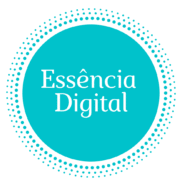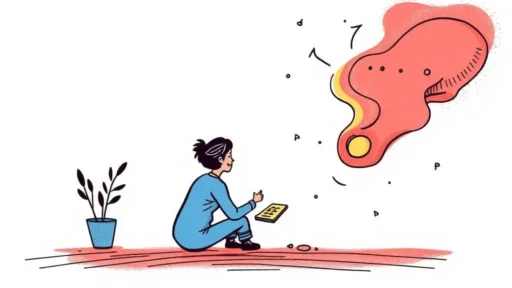The freelance dream is built on a foundation of freedom—the autonomy to choose your projects, set your own schedule, and be the master of your own career. But this same freedom, if left unchecked, can pave a direct path to burnout. The very passion that drives you to do great work can also convince you to work at all hours. The autonomy that frees you from a boss can also leave you isolated and solely responsible for every single pressure.
Burnout isn’t a sign of failure or weakness; it’s a systemic risk of the modern freelance model. It’s a state of chronic exhaustion that can poison your passion, cripple your creativity, and jeopardize the very career you worked so hard to build.
Preventing it requires more than just the occasional day off. It demands a proactive, strategic defense plan. This guide provides actionable strategies to protect your most valuable asset: you.
Recognizing the Red Flags: What Burnout Really Looks and Feels Like
Burnout is more than just feeling tired. The World Health Organization defines it as a syndrome resulting from chronic workplace stress that has not been successfully managed. It’s a gradual erosion, not a sudden collapse, and it manifests in three key ways:
- Exhaustion: A bone-deep mental and physical fatigue that isn’t fixed by a good night’s sleep. Every task feels like a monumental effort.
- Cynicism and Detachment: A growing sense of negativity and resentment toward your work, your clients, and your industry. The projects you once loved now feel like a burden.
- Reduced Efficacy: The feeling that you are no longer effective at your job. You might stare at a blank page for hours, doubt your skills, and feel that you are accomplishing nothing, no matter how hard you work.
As a freelancer, you don’t have an HR department to spot these signs. Self-awareness is your first and most important line of defense.
Build Your Personal “Operating Manual”: Define Your Limits
A primary driver of freelance burnout is the relentless pressure to say “yes.” We say yes to build our portfolio, yes to please a client, and yes because we fear turning down income. But every “yes” has a hidden cost—it’s a “no” to rest, to personal projects, to time with loved ones.
Instead of reacting to opportunities as they come, proactively define your capacity. This becomes your business’s “Operating Manual.”
Actionable Step: The Capacity Audit. For one week, track your hours and energy. Then answer these questions honestly:
- How many focused hours can I realistically work per day before my quality declines?
- How many projects can I juggle simultaneously without feeling overwhelmed?
- What is the minimum income I need, and what is a comfortable target?
Use these answers to set clear, data-driven limits. It is far more professional and sustainable to deliver outstanding work to five clients than to deliver mediocre, burnout-fueled work to ten.
The Energy Management Matrix: Manage Your Energy, Not Just Your Time
Time management is only half the battle. A block of time at 9 a.m. when you’re fresh and focused is not equal to a block of time at 4 p.m. when you’re fatigued. The most productive freelancers manage their energy with as much intention as their calendar.
Map your tasks to your energy levels using a simple matrix:
- High Energy / High Focus tasks: Reserve your peak hours for this. This is your most valuable, deep work—writing, designing, coding, strategy development.
- High Energy / Low Focus tasks: Good for client calls, brainstorming sessions, or networking. You have energy but don’t need intense concentration.
- Low Energy / Low Focus tasks: Perfect for administrative work. Use your energy dips to send invoices, organize files, or answer non-urgent emails.
Working in harmony with your natural energy cycles allows you to get more done with less strain.
The “Commute” You Create: Rituals for Mental Separation
Without a physical journey to and from an office, the lines between work and life become dangerously blurred. A “shutdown ritual” is a non-negotiable for creating this mental separation. It’s a series of small actions that tells your brain the workday is officially over, allowing you to truly disconnect and recharge.
Your “Startup” Ritual might include:
- Making coffee and reviewing your top 3 priorities for the day.
- A 10-minute walk outside to get fresh air.
Your “Shutdown” Ritual might include:
- Tidying your desk and closing all work-related tabs.
- Writing down your top priority for tomorrow so you can start fresh.
- Saying a specific phrase out loud, like “Workday complete.”
The Strategic Value of “Productive Pauses”
In freelance culture, there’s often a feeling of guilt associated with not working. But science shows that our brains solve complex problems in the background when we are at rest (via the “default mode network”). Stepping away isn’t laziness; it’s a strategic part of the creative process.
When you hit a wall or feel a slump in energy, a “Productive Pause” is often the best solution. Go for a walk, listen to music, or do a household chore. You’ll often return to your desk with the clarity or creative breakthrough that was eluding you.
Your North Star: Reconnecting with Your “Why”
Burnout thrives when your daily tasks feel disconnected from a sense of purpose. When you’re drowning in admin, chasing invoices, and dealing with difficult clients, it’s easy to forget why you chose this path.
Regularly reconnecting with your “why” is a powerful antidote.
- Create a “Freelance Manifesto”: A one-page document answering: Why did I start freelancing? What kind of impact do I want to have? What are my non-negotiable values?
- Review it quarterly. Are your current projects and clients aligned with your manifesto? If not, what one change can you make to move closer to that alignment?
This “North Star” can guide your decisions and reignite your motivation when the daily grind feels overwhelming.
Conclusion
Avoiding burnout is not about working less; it’s about working with more intention, awareness, and alignment. It’s about building a business that is designed to support your life, not consume it. By setting intelligent boundaries, managing your energy, and staying connected to your purpose, you can create a freelance career that is not only profitable but deeply fulfilling.
Remember this crucial truth: rest is not a reward for hard work. It is a fundamental part of the work itself.

